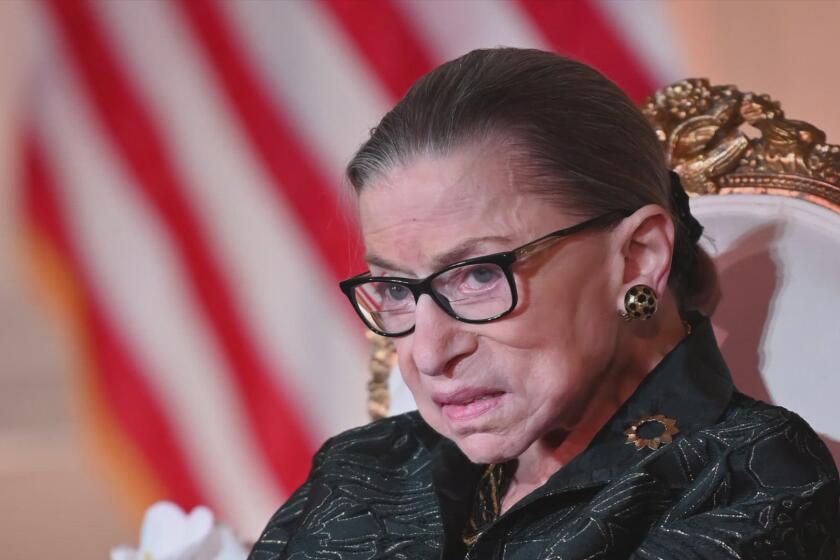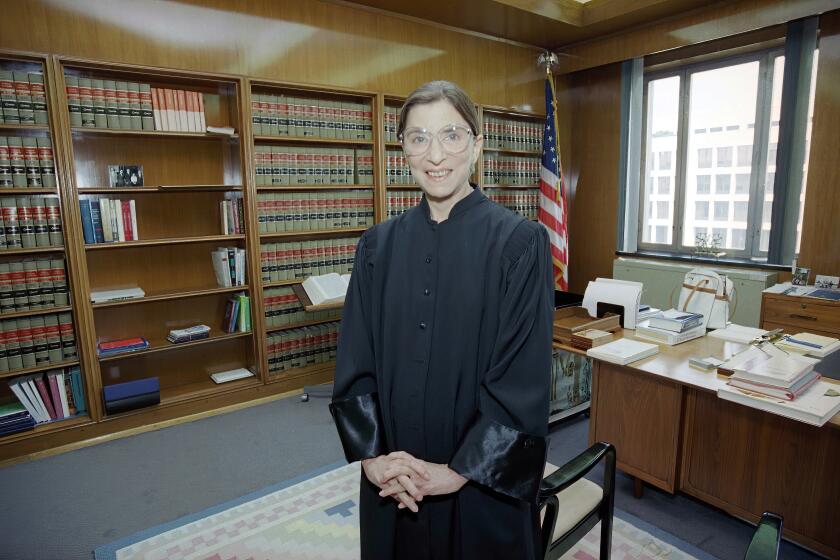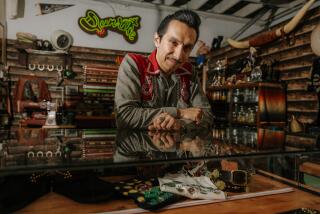Ruth Bader Ginsburg’s coded collars taught us that the little things matter
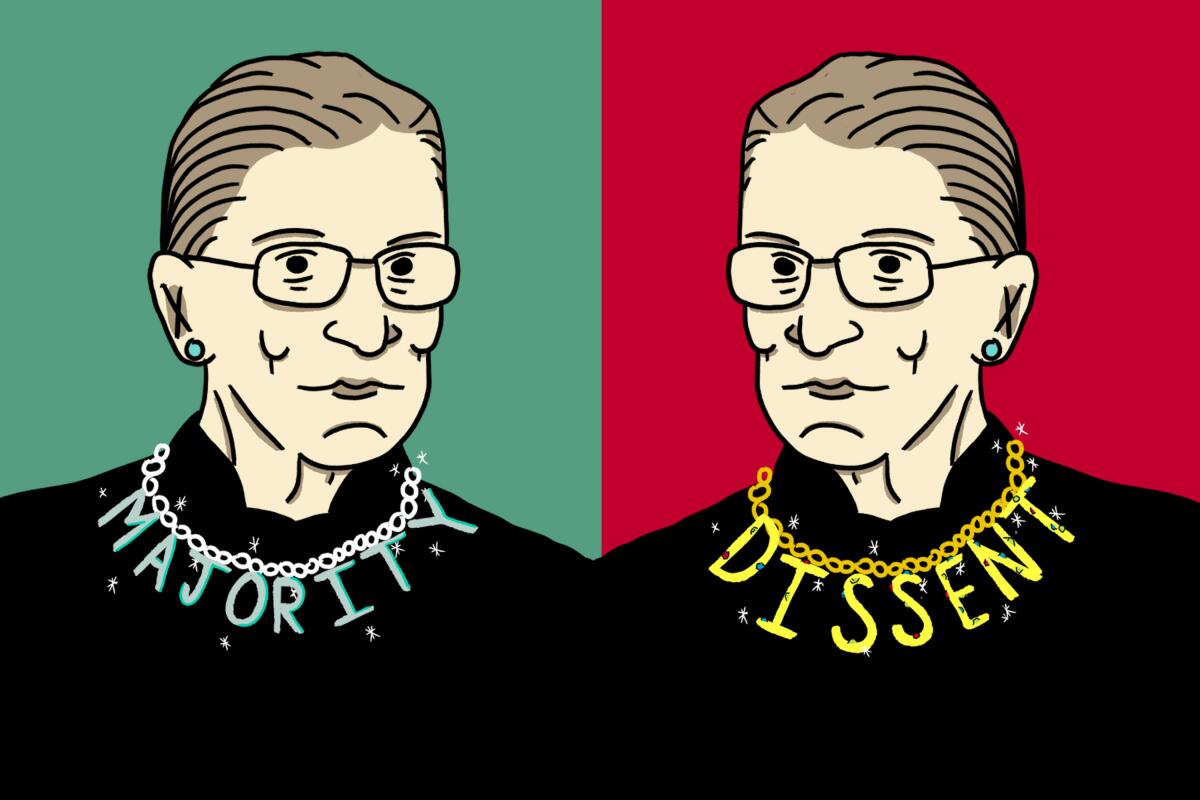
What kind of style lessons can you learn from someone who wears the same black robe to work every day? Plenty — especially if that person was U.S. Supreme Court Justice Ruth Bader Ginsburg, who died Sept. 19 at the age of 87.
That’s because the trailblazing lawyer, feminist icon and tireless champion of LGBTQ rights, who spent 27 years on the high court, was masterful in letting her workplace wardrobe send a message — even when all that differentiated her from her eight co-workers was a delicate lace collar.
After lying in repose at the Supreme Court Wednesday and Thursday, Ginsburg will become the first woman to lie in state at the Capitol. In honor of the jurist who continues to blaze trails, below are three life — and style — lessons we’ve learned from the Notorious RBG.
Justice Ruth Bader Ginsburg was the second woman to serve on the Supreme Court and the first to become a pop culture icon.
The status quo can be leveraged
In 2009, Ginsburg explained to TV news anchor Brian Williams how the collar came to be. “You know, the standard robe is made for a man because it has a place for the shirt to show and the tie,” she said. “So Sandra Day O’Connor and I thought it would be appropriate if we included it as part of our robe, something typical of a women. So I have many, many collars.” (Ginsburg’s wearing of the collar casts such a large shadow that it’s easy to forget O’Connor — the first woman appointed to the Supreme Court — also accessorized her black robe with a lace jabot during her years on the bench.)
This was not the first time Ginsburg had found a way to leverage the constraints of a male-oriented environment to her benefit.
Although she graduated first in her class at Columbia Law School in 1959 and was recommended for a clerkship with Supreme Court Justice Felix Frankfurter by a Harvard Law School professor, Frankfurter said he wasn’t ready to hire a woman. She was similarly stymied in trying to land a job at a New York law firm.
After a stint in academia, where she found she was getting paid less than her male colleagues, Ginsburg started handling sex discrimination cases referred to her by the American Civil Liberties Union. In 1972, she cofounded the ACLU’s Women’s Rights Project. The following year, she argued her first case before the U.S. Supreme Court.
Directors Julie Cohen and Betsy West spent years with the late Supreme Court Justice Ruth Bader Ginsburg to make their Oscar-nominated film ‘RBG.’
A sartorial signature is powerful branding
While O’Connor’s collar style remained pretty much the same throughout her tenure on the high court — variations of the frilly lace jabot that fell vertically from the throat — Ginsburg built up an entire wardrobe of different collars. Some were lace, others were metal. Many were white, but others were festooned with black beads or bedazzled with yellow jewels. Some fell vertically like the traditional jabot, and others encircled her neck like a lace doily.
The body of Justice Ruth Bader Ginsburg will lie in repose at the Supreme Court this week, with plans to allow public viewing despite the coronavirus.
As the years went by, Ginsburg’s strong accessories game gained cultural prominence, and her sartorial signature was firmly established.
Like Abraham Lincoln’s stovepipe hat and Elvis’ white jumpsuit, the delicate semicircle of lace at the neck has become instant visual shorthand for RBG.
If you don’t believe me, just look at photos of the Supreme Court sitting at any State of the Union address. Ginsburg can be immediately identified in the midst of the black-robed knot because the eye is immediately drawn to the adornment at her neck.
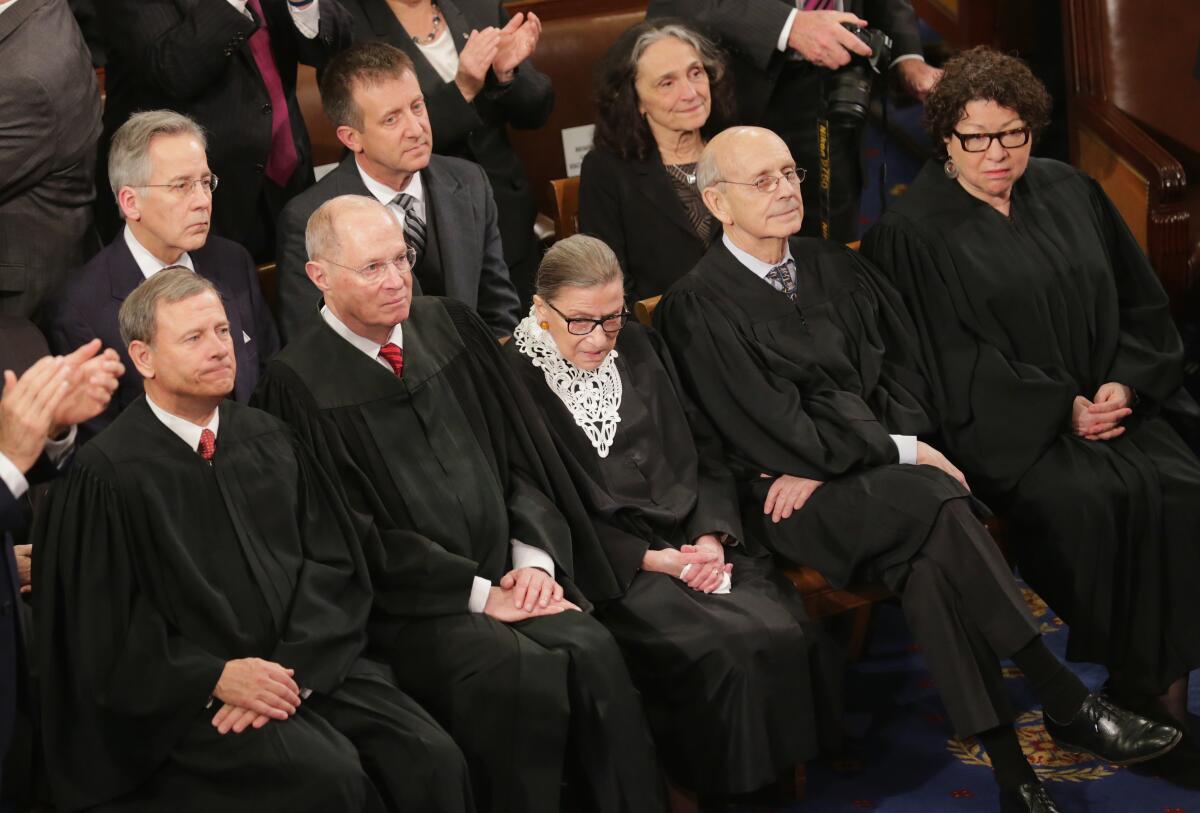
This is about as powerful as personal branding gets and, whether you’re in the public eye or not, there’s value in finding some small wearable way to telegraph to the world that you’re uniquely you. Steve Jobs did that with his black-turtleneck-and-jeans look, Mark Zuckerberg with his hoodies (at least for a while) and Sarah Palin with her distinctive Kazuo Kawasaki 704 rimless eyeglass frames and upswept hairstyle.
Tiny things can speak volumes
In the world of fashion, the smallest details can mean a lot, from the shape of a sleeve and length of a pant leg to the placement of a button. (Just look at the buttons on a dress shirt. On men’s shirts, the buttons are on the right; on women’s, they’re on the left.) Ginsburg knew this well and would often wear specific collars for specific occasions. She explained this while giving Katie Couric a tour of her collar collection in 2014.
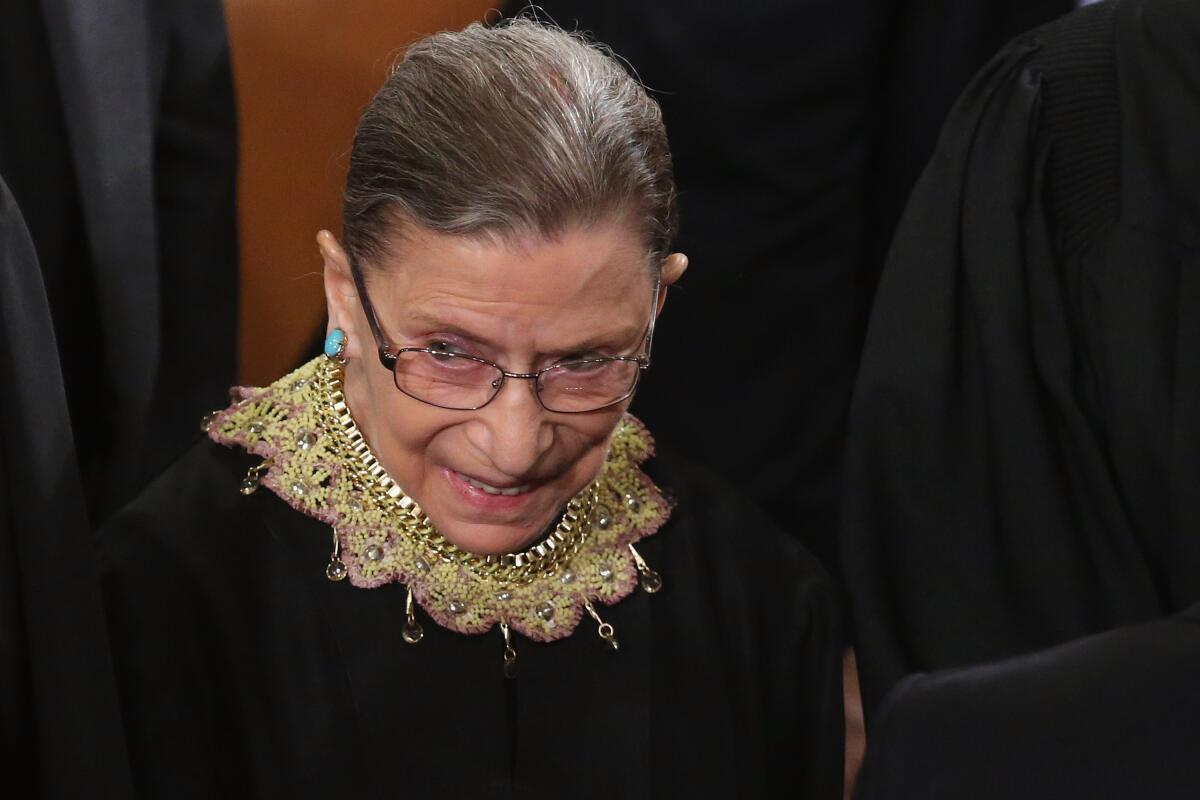
In addition to her favorite collar (a white crocheted jabot from Cape Town, South Africa), she pointed out her majority opinion collar. It was a crocheted collar in yellow and beige flowers with scalloped edges that dangled teardrop beads at the edge and a chunky gold metallic chain near the neck (a gift from her law clerks). Then there was her dissent collar — a black Banana Republic bib necklace studded vertically with crystals that looked as solid as an armor plate. Asked by Couric why that one was named the dissent collar, Ginsburg responded with a slight chuckle: “It looks fitting for dissents.”
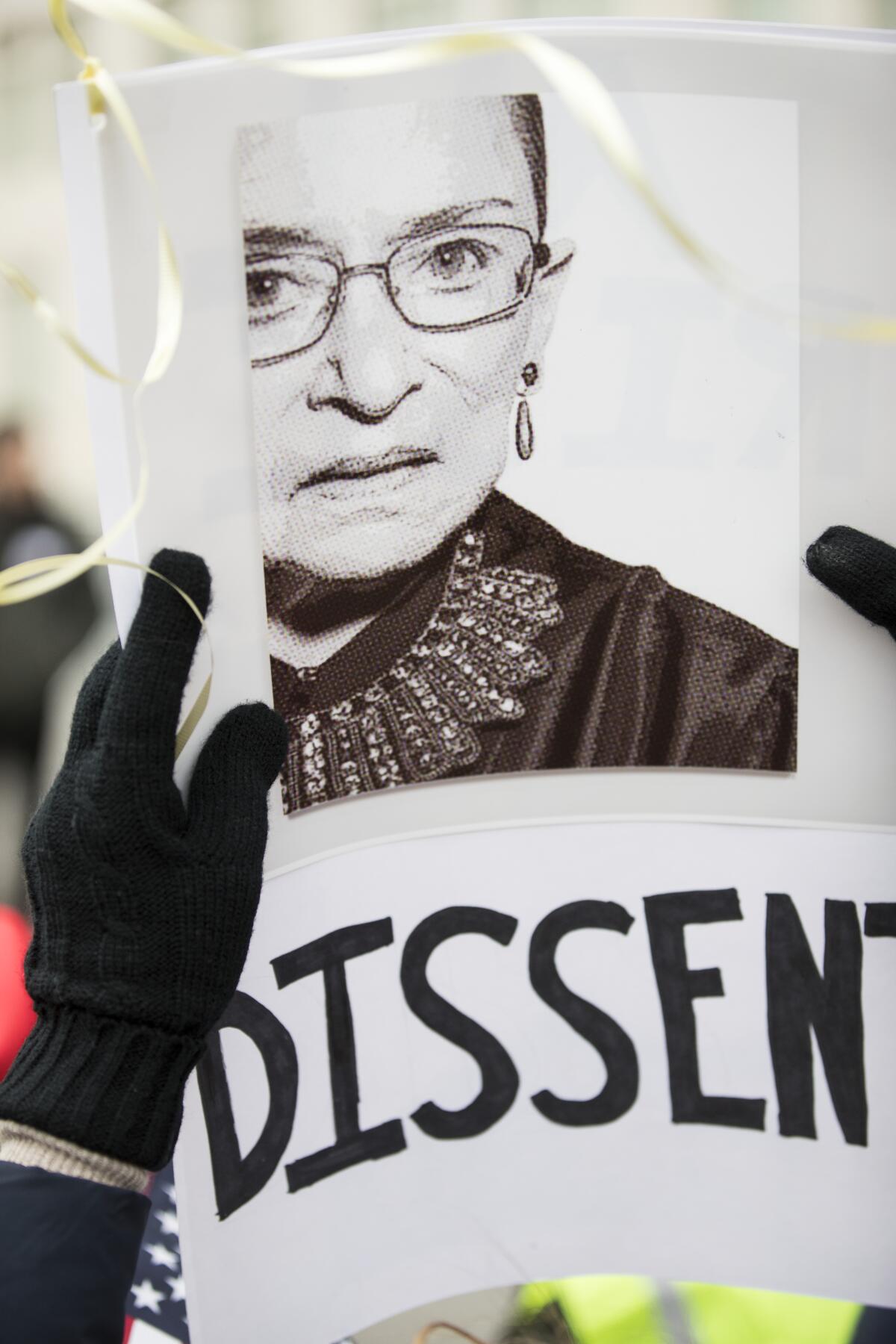
By 2016, the meaning behind many of her coded collars had become so well known that when the Supreme Court convened the day after the presidential election, it was quickly noted that Ginsburg was sporting her dissent collar, although no decisions were being issued that day.
Zendaya, Cynthia Erivo and Jennifer Aniston were among the evening’s style standouts.
More to Read
Sign up for The Wild
We’ll help you find the best places to hike, bike and run, as well as the perfect silent spots for meditation and yoga.
You may occasionally receive promotional content from the Los Angeles Times.

